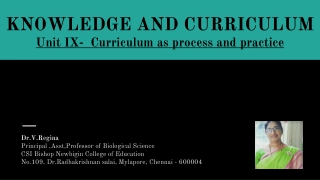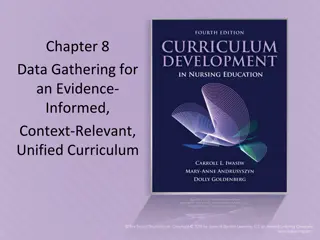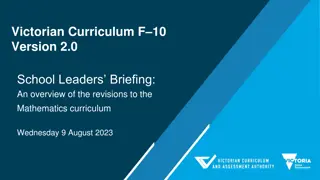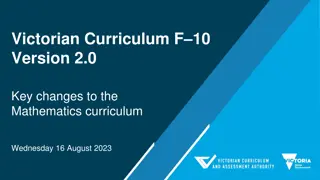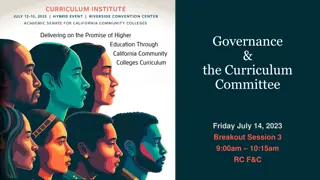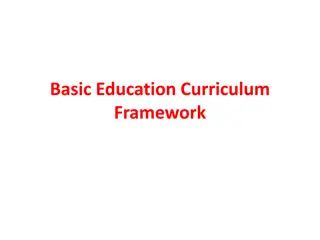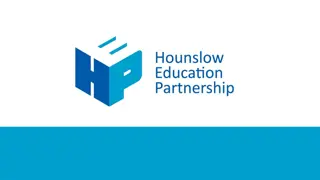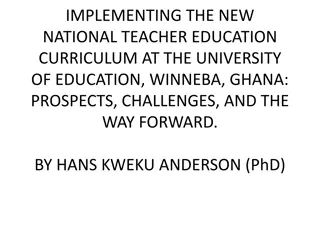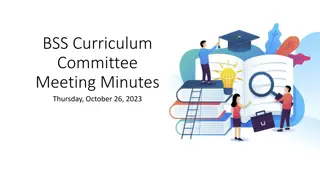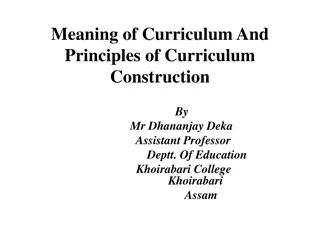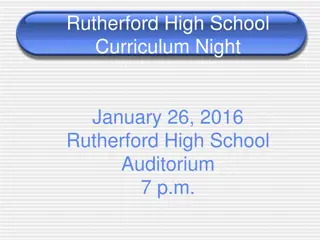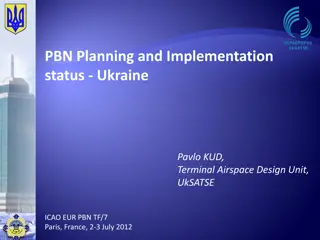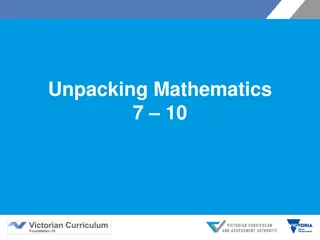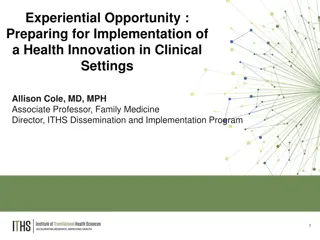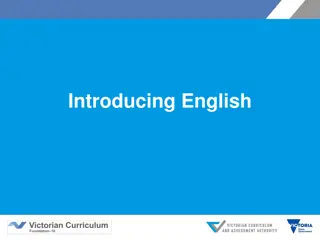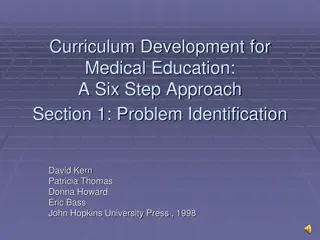Heutagogy Curriculum: Characteristics and Implementation
In this presentation, explore the essence of Heutagogy curriculum, its characteristics, and how it can be effectively implemented in education. Delve into the changing facets of current and future generations of students, understand the influence of IR4.0, and discover the different generational traits. Witness the shift towards personalized learning, co-curation of knowledge, and the blurring of academic disciplines. Find out how the curriculum is evolving to incorporate life skills, talents, and interdisciplinary convergence between man and machine, promoting human-centered education and affective domain development.
Uploaded on Mar 15, 2025 | 0 Views
Download Presentation

Please find below an Image/Link to download the presentation.
The content on the website is provided AS IS for your information and personal use only. It may not be sold, licensed, or shared on other websites without obtaining consent from the author.If you encounter any issues during the download, it is possible that the publisher has removed the file from their server.
You are allowed to download the files provided on this website for personal or commercial use, subject to the condition that they are used lawfully. All files are the property of their respective owners.
The content on the website is provided AS IS for your information and personal use only. It may not be sold, licensed, or shared on other websites without obtaining consent from the author.
E N D
Presentation Transcript
By Norhayati Ahmad
This presentation Why is it happening? Heutagogy Curriculum: Characteristics and Implementation Conclusion
Why is it happening? IR4.0 New Education Vission : Malaysia Education Blueprint 2015 - 2025 (Higher Education) The changing facets of Current and Future Generations of Students
Which Generation are You? (*age if still alive today) Oldest Age Today* Generation Name Births Start Births End Youngest Age Today* The Lost Generation The Generation of 1914 1890 1915 103 128 The Interbellum Generation 1901 1913 105 117 The Greatest Generation 1910 1924 94 108 The Silent Generation 1925 1945 73 93 Baby Boomer Generation 1946 1964 54 72 Generation X (Baby Bust) 1965 1979 39 53 Xennials 1975 1985 33 43 Millennials Generation Y, Gen Next 1980 1994 24 38 iGen / Gen Z 1995 2012 6 23 Gen Alpha 2013 2025 1 5
iGen/Gen Z Less "in person" and "face to face" contact with others due to more time connecting via gadjets Heavy use of gaming Less reading of books, and newspapers Grew up more supervised, more protected than prior generations Less experience with teen jobs and earning money in high school Experience with disruptive technology (smartphone, UBER, airbnb) May stay up till 2 AM using smart phone and social media Possibly more depressed than prior generations Feels more lonely, and not needed Possibly a higher suicide rate
Heutagogy Personalization of learning Co-Curators of Knowledge Blurring in Academic Disciplines
Curriculum incorporates Life skills, talent and other value added skills Human centred rather than tasks based Interdisciplinary Convergence of man and machine (technology enhanced, gamification) Development of affective domains (social intelligence as much as IQ) Anywhere, anytime learning
Teaching and Learning process Active learning (student centred learning) Self directed learning (explore and learn, learning by doing, home schooling?) Peer learning (group activities, co-operative learning)) Challenge based learning (competitions, designs) Synchronised classroom (interactive, you-tube, life streaming with other universities) Open on-line courses (anywhere, anytime) Achievement of skills (digital badge, certificates, credentials, progress bar) 2U2i (learning at univ and industries)
Characteristics of Fluid and Organic Curriculum 1.Risk Tolerant & allows inter-disciplinary study 2.Personalised recognizes individual interest, ability and style 3.Responsive, non-prescriptive and flexible -what, when and where to study 4.Focus on humanistic elements & permits maximum self-actualization of each individual 5.Develops specific and measurable cognitive & behavioural attainments 6.Involves co-curation & trust 7.Excites, challenges, and motivates each student 8.Feedback through assessment for learning and assessment as Learning 9.Transparent and Intentional 10.Rewards every key achievement 11.Leverages on Technology to enrich & enhance learning 12.Promotes self-directed, independent learning * Ref (Taylor s University: Developing Fluid and Organic Curriculum)
Some implementations in Malaysian Universities CEO@faculty - local and international CEO of industries to share experience and knowledge 2U2i - 2 years in universities and 2 years in industries MOOCs (Massive Open Online Courses) - Online learning that can transfer credit to formal academic programme Gap Year - 2 sem off to do: national services, volunteerism, general (sports, travels and work) Jukebox Education - Campus-in-Campus (CIC) initiative - Engaging students in global clasroom (student exchange, Joint Degree, Joint supervision, joint research and laboratory with partner universities APEL - Accreditation of Prior Experiencial Learning - identification, documentation and evaluation of previous experienced based learning - from certificate to Master degree
Example Go to Taylor s presentation slides Go to Taylor s website
COMPLEMENTARY STUDIES The Complementary Study Component allows student to study modules in a related or unrelated field from the same or different school to complement the primary major. It may be completed in a form of free electives, extension, minor or a second major that typically requires at least one (1) semester of student learning time.
Broad electives Electives Choose from five to seven free elective modules in 3 different clusters of which not related to the Primary Major. These clusters include (i) Arts, Humanities and Social Sciences, (ii) Business, Services and Management and (iii) Science, Technology and Society. A Minor Gain breadth of knowledge by taking five set modules outside of a particular major field of study. There are 53 minors offered. An Extension Expand depth of knowledge by taking five set modules in a specific area within a major field of study. There are 21 extensions available. A Second Major Master another field of study by taking 12 set modules. Choose from 11 majors.
Conclusion Education providers need to be sensitive to customer requirement as students have plenty of choices MEDIU/Faculty .. Need to benchmark other universities (local and international) Need to venture into new areas/fields Need to conduct market survey Need to review curriculum to suit current trends (main content, new electives and technology support) Need to upgrade facilities for effective T&L Need to train lecturers on heutagogy


